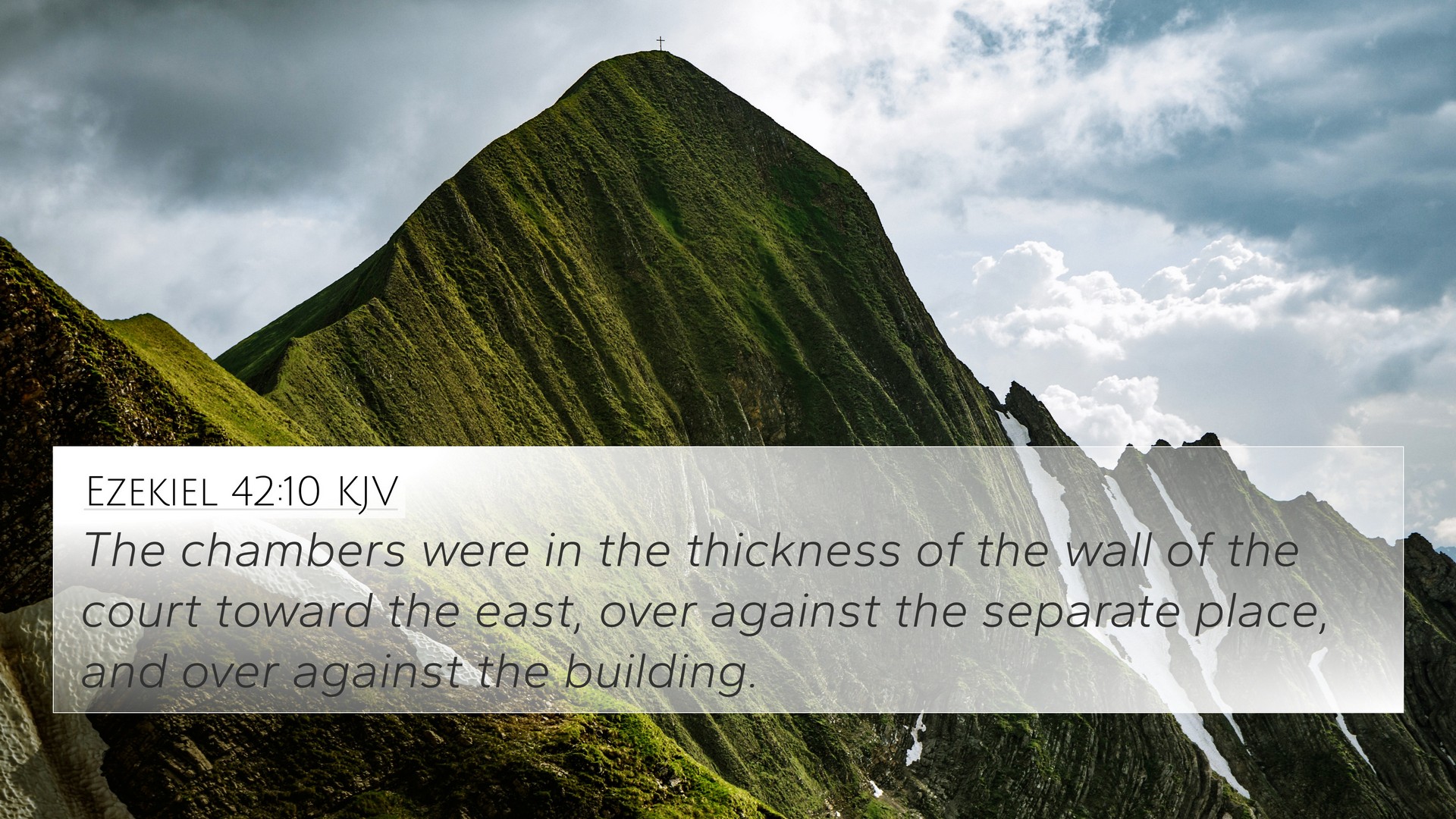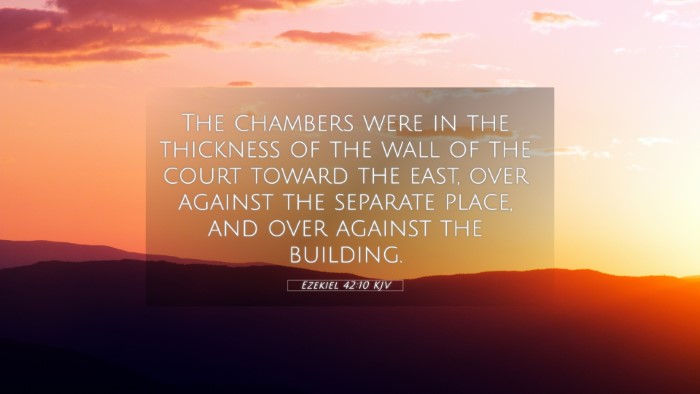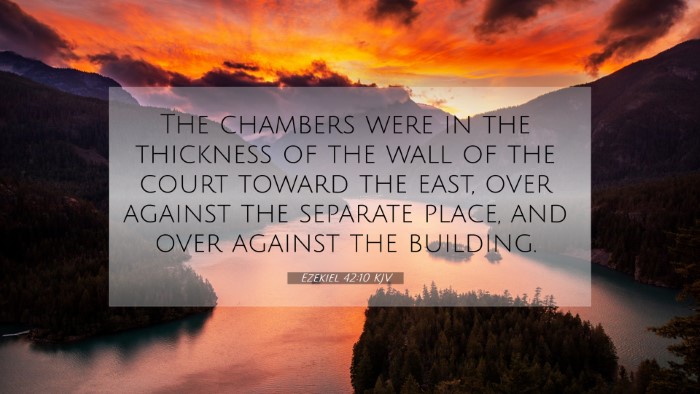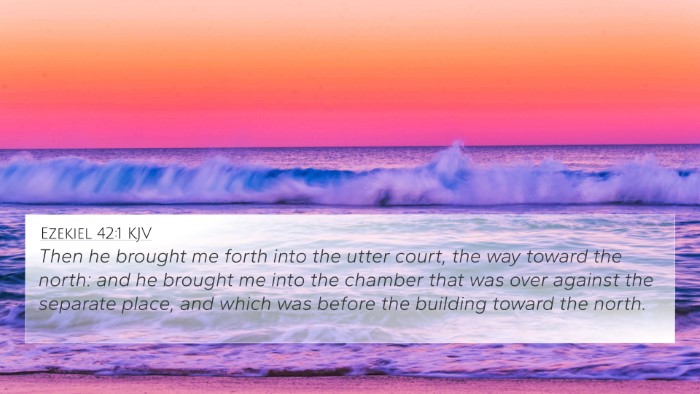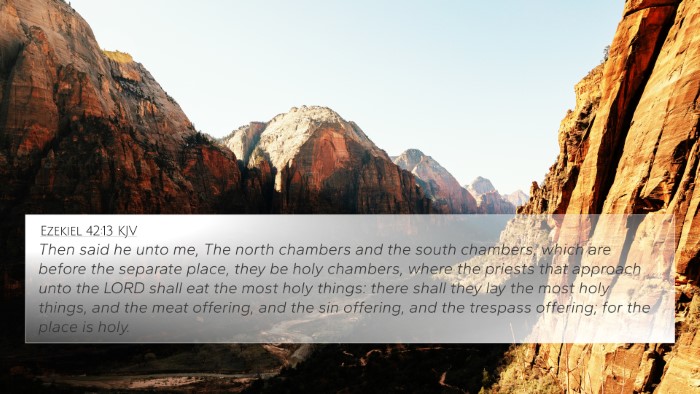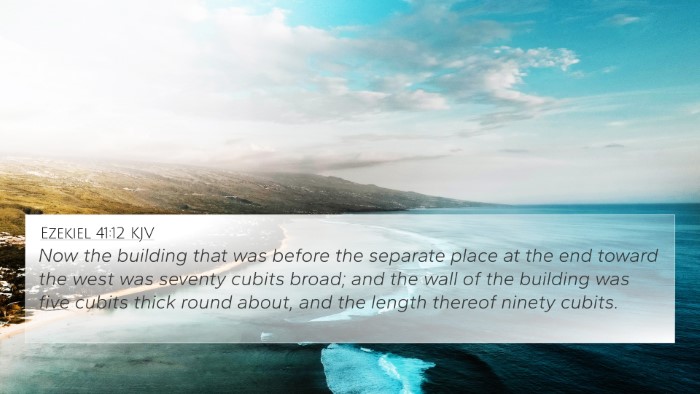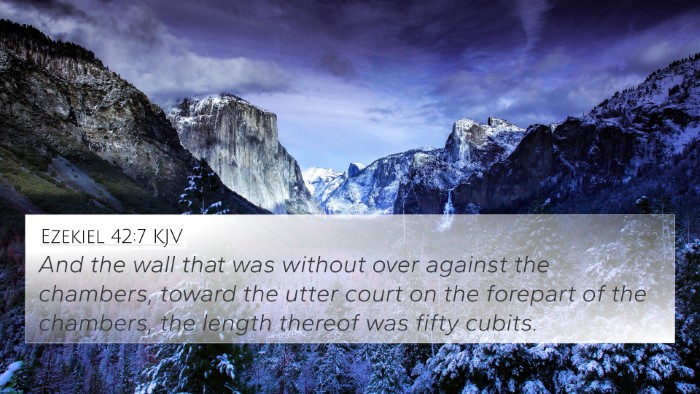Ezekiel 42:10 - Summary and Interpretation
Ezekiel 42:10 states: "In the north, on the outside of the temple precinct, were chambers opposite the other chambers; the length of these was the same as the other chambers." This verse is situated within Ezekiel's grand vision of the restored temple, symbolizing God's presence among His people.
Meaning and Context
This passage describes the layout of the chambers that surround the temple. These chambers served various purposes, including storage and housing for the priests. The meticulous description in Ezekiel emphasizes the order and beauty of the temple, which reflects God’s holiness and the need for an organized approach to worship.
Insights from Public Domain Commentaries
- Matthew Henry:
Henry notes that the precise measurements and arrangements of the temple chambers signify God's careful design concerning worship. The mention of the chambers echoes the notion of God's dwelling among His people, instructing them in the proper way to approach Him through sacrifice and prayer.
- Albert Barnes:
Barnes emphasizes the architectural details, asserting that such descriptions highlight the importance of sacred space in the life of Israel. The orderliness mirrors divine order, hinting at the necessity for Israel to maintain a pure and dedicated space for worship.
- Adam Clarke:
Clarke interprets the design as a foreshadowing of spiritual realities. He observes that the arrangement of chambers reflects the organization of the church, with each chamber fulfilling its unique role in the service of God. Clarke suggests that all biblical spaces point ultimately to heaven, where God's presence is perfectly manifest.
Bible Verse Cross-References
Ezekiel 42:10 connects with several key verses throughout the Bible, allowing for a comprehensive understanding of the themes within the text. Below are relevant cross-references:
- Revelation 21:22: Discusses a lack of a physical temple in the New Jerusalem, emphasizing the direct presence of God.
- 1 Kings 6:2: Describes Solomon's temple, offering a comparative analysis of its grandeur with Ezekiel's vision.
- Isaiah 66:1: States that heaven is God's throne, underlining the spiritual significance of temple construction in relation to divine presence.
- Ezekiel 40:5: Details the measurements of the temple area, forming the groundwork for understanding the spatial dynamics in 42:10.
- Numbers 8:15: Provides insight into the priestly functions, enriching our understanding of the purpose of the temple chambers.
- Hebrews 9:24: Acknowledges that earthly sanctuaries are representations of the true, heavenly patterns, connecting the physical to the spiritual.
- Psalms 68:28: Invokes the idea of God's presence and authority, which resonates throughout the temple narrative in Ezekiel.
Thematic Bible Verse Connections
The themes derived from Ezekiel 42:10 and its associated cross-references explore God's holiness, the order of worship, and the importance of community within spiritual practices. These themes guide believers in understanding worship's role in their relationship with God.
Cross-Referencing Biblical Texts
Utilizing tools for Bible cross-referencing enhances comprehensiveness in study. For example, through a Bible concordance or reference guide, one can identify connections between Old and New Testament verses, aiding in deeper thematic studies. For instance:
- Identify how John 4:20-24 connects to temple worship.
- Explore links between Matthew 21:12-13 and themes of purity in temple space.
Conclusion
The examination of Ezekiel 42:10 reveals profound insights about the nature of worship and God's presence. As believers engage with this verse, they are encouraged to consider the architectural and spiritual implications of the temple design as a narrative of God's ongoing relationship with humanity.
In summary, Ezekiel 42:10 acts as a compelling reminder of God's desire for order and beauty in worship, encouraging a reflective approach in both personal and communal settings.
